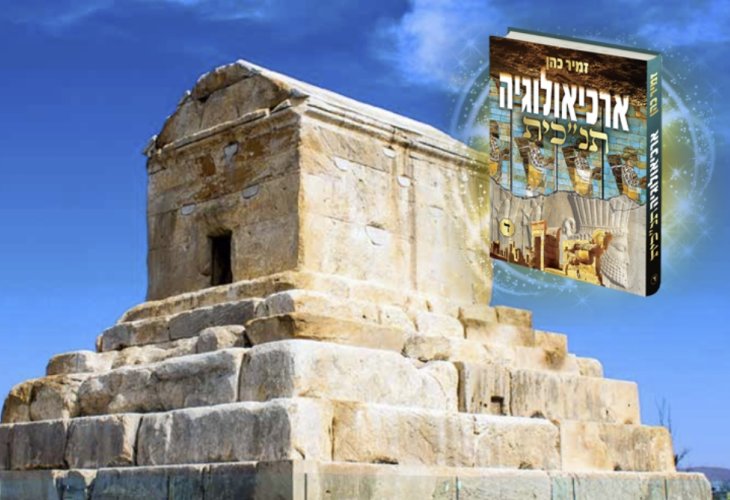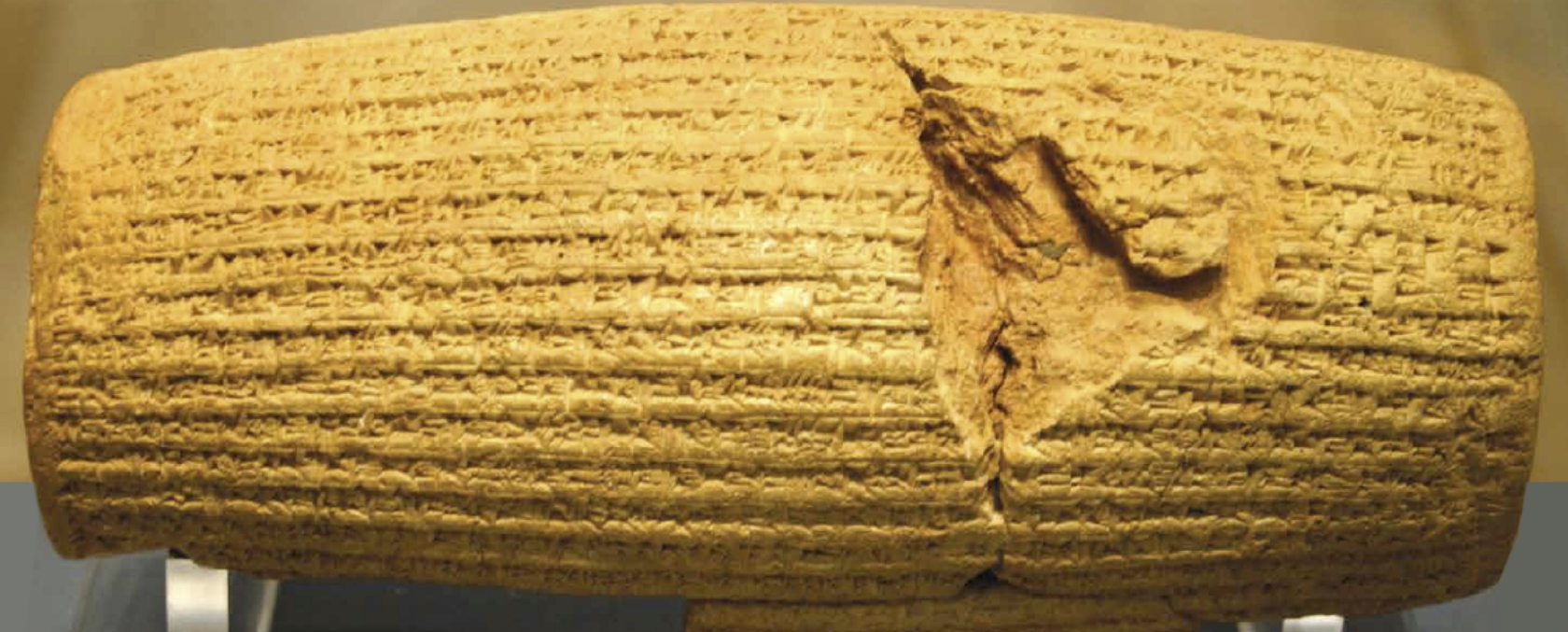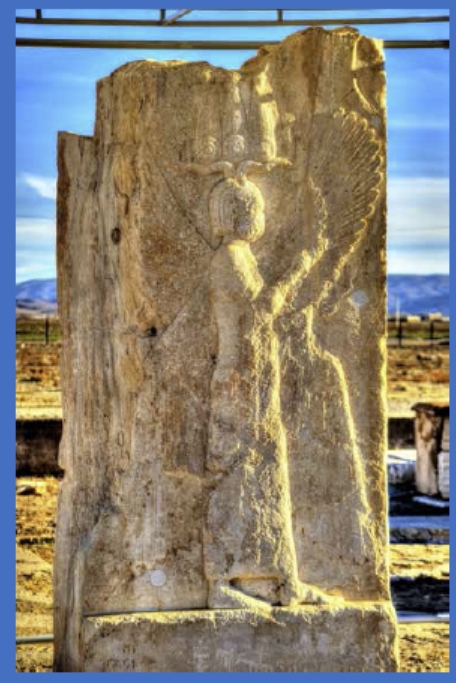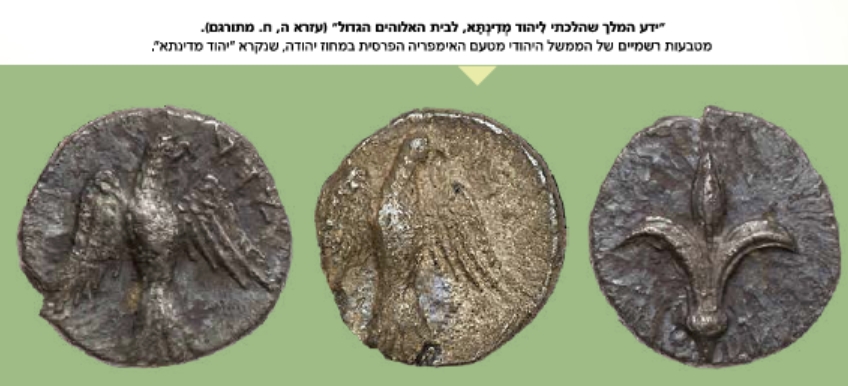The Legacy of Cyrus: How a Persian King Changed Jewish History
Discover how King Cyrus the Great permitted the Jewish exiles to return and rebuild their temple, as told in the compelling new book 'Biblical Archaeology, Part IV'.
 The tomb of Cyrus II in Pasargadae, Persia
The tomb of Cyrus II in Pasargadae, Persia"These are the people of the province who returned from captivity... They returned to Jerusalem and Judah, each to their town" (Ezra 2:1)
"A Song of Ascents: When Hashem brought back those who returned to Zion, we were like dreamers" (Psalms 126:1)
After years of challenging exile, a glimmer of hope shone for the Jewish people. The Persian king Cyrus II, known as "Cyrus the Great," issued the famous "Cyrus Declaration," allowing the Jewish people to return to their homeland.
Cyrus was a benevolent ruler to the nations under his dominion, yet also a strong and decisive leader. He successfully led the Persian Empire into newfound wealth and vast geographic expansion. Under his empire, many Jews who had been exiled by Assyrian and Babylonian kings resided in the ancient East.
The king encouraged the Jews under his rule to return to their land and rebuild the destroyed Temple, as recounted in the Book of Ezra:
"In the first year of Cyrus king of Persia, that the word of Hashem by the mouth of Jeremiah might be fulfilled, Hashem stirred up the spirit of Cyrus king of Persia, so that he made a proclamation throughout all his kingdom and also put it in writing, saying:
So says Cyrus king of Persia: Hashem, the G-d of heaven, has given me all the kingdoms of the earth, and has appointed me to build Him a house in Jerusalem, which is in Judah. Whoever is among you of all His people, may his G-d be with him, and let him go up to Jerusalem, which is in Judah, and build the house of Hashem, the G-d of Israel – He is the G-d who is in Jerusalem."
The Cyrus Cylinder
In 1879, the British archaeologist Hormuzd Rassam discovered a clay cylinder in the ancient city of Babylon, inscribed in Akkadian by King Cyrus. It declares his intention to restore peace to the lands under his rule, allowing those exiled to return to their homelands and worship their gods.
Here are excerpts from the inscription, where Cyrus also identifies himself as king of Babylon, noting that he returned exiles to their lands and instructed each nation to rebuild their destroyed temples:
"I am Cyrus, king of Babylon, king of the four corners of the world...
As I entered Babylon peacefully and established the throne in the royal palace... I took care of the well-being of Babylon and the other holy cities... and the cities of Ashur and Susa, Akkad and Eshnunna, and the regions beyond the Tigris whose shrines were in ruins... I returned the gods to their places and established for them everlasting shrines... I gathered all their inhabitants and returned them to their homes... I resettled them peacefully in their dwelling places."
 The Cyrus Cylinder, found in the ancient city of Babylon and now on display at the British Museum
The Cyrus Cylinder, found in the ancient city of Babylon and now on display at the British MuseumThis inscription suggests that the declaration written in the Book of Ezra was tailored for the Jewish people, and that similar declarations were made for other nations. Some scholars who believe Cyrus was the son of Queen Esther speculate that this broad policy aimed to avoid accusations of favoritism toward Jews, and thus Cyrus did not mention them specifically in the cylinder inscription.
* * *
Some Jews in Babylonian exile seized the opportunity and returned to the Land of Israel.
It is remarkable to see that long before Cyrus was born, the prophet Isaiah foretold that a king named Cyrus would assist the Jews in returning to their land and rebuilding Jerusalem:
"Who says to Jerusalem, ‘You shall be inhabited,’ and to the cities of Judah, ‘You shall be built.’ I will raise up her ruins...to Cyrus, my shepherd, I say: He shall do all my pleasure, saying to Jerusalem: ‘She shall be built’ and to the temple: ‘Your foundation shall be laid.’"
 Depiction of Cyrus II on an ancient relief found at his capital city, Pasargadae, in Persia
Depiction of Cyrus II on an ancient relief found at his capital city, Pasargadae, in PersiaRebuilding the Temple Altar
Initially, only a small number of Jews chose to return to the Land of Israel. This initial wave is called "Sheshbazzar's Aliyah" after its leader, who also brought back the Temple vessels looted by Nebuchadnezzar:
"King Cyrus removed the vessels of the House of Hashem, which Nebuchadnezzar had taken from Jerusalem and placed in the house of his god... And he accounted them to Sheshbazzar the prince of Judah... and they were brought up from Babylon to Jerusalem."
Later, another group arrived in the land, led by the prophets Haggai, Zechariah, and Malachi, as well as the leader Zerubbabel ben Shealtiel, a descendant of King David, and the High Priest Joshua ben Jehozadak.
Upon their arrival in Jerusalem, the returnees began to rebuild the destroyed altar to immediately resume the sacrificial offerings to Hashem, even though the Temple was yet to be reconstructed. As described in the Book of Ezra:
"The people gathered as one in Jerusalem... and they built the altar of the G-d of Israel to offer burnt offerings upon it, as it is written in the Torah of Moses, the man of G-d. They set up the altar on its bases... and they offered burnt offerings to Hashem... though the Temple of Hashem had not been founded."
When the altar was rebuilt and sacrifices resumed, a joyous thanksgiving ceremony to Hashem was held:
"They stationed the priests in their attire with trumpets, and the Levites, the sons of Asaph, with cymbals, to praise Hashem... They sang a hymn of thanksgiving to Hashem, for He is good, for His kindness is eternal upon Israel; and all the people shouted a great shout with praise to Hashem..."
However, the great joyous occasion was mixed with the sadness of many older individuals who remembered the splendor and holiness of the first Temple they had witnessed in all its glory:
"Many of the priests and Levites and the heads of families, the elders who had seen the first house standing, wept aloud when they saw this house, while many shouted for joy:"
 (Courtesy & Copyright Ira & Larry Goldberg Coins & Collectibles, Inc)
(Courtesy & Copyright Ira & Larry Goldberg Coins & Collectibles, Inc) (Courtesy & Copyright Ira & Larry Goldberg Coins & Collectibles, Inc)
(Courtesy & Copyright Ira & Larry Goldberg Coins & Collectibles, Inc)
The Building of the Second Temple
Eighteen years passed since the rebuilding of the altar in Jerusalem, during which sacrifices continued, yet the Temple remained in ruins. Consequently, the prophet Haggai rallied the nation's leaders to construct the Temple anew:
"In the second year of Darius the king, in the sixth month, on the first day of the month, the word of Hashem came by the prophet Haggai to Zerubbabel the son of Shealtiel, the governor of Judah, and to Joshua the son of Jehozadak, the high priest, saying: Is it time for you to dwell in your paneled houses, while this house is in ruins? Go up to the hill country and bring timbers, and build the house."
His words were heeded by them and by the people, who began to rebuild the Temple:
"Zerubbabel the son of Shealtiel and Joshua the son of Jehozadak, the high priest, and all the remnant of the people, listened to the voice of Hashem their G-d, and to the words of Haggai the prophet... And they came and worked on the house of Hashem [Rashi: they began chiseling stones and sawing wood]".
The Arrival of Ezra the Scribe
The next wave of aliyah came under the leadership of Ezra the Scribe, who ascended from Babylon with a large group, including priests and Levites, shortly after the dedication of the Second Temple. As recounted in the Scriptures:
"After these events, during the reign of Artaxerxes king of Persia, Ezra the son of Seraiah, the son of Azariah, the son of Hilkiah... This Ezra went up from Babylon. He was a scribe expert in the Torah of Moses which Hashem, the G-d of Israel, had given. The king granted him all his request according to the hand of Hashem his G-d upon him. And some of the children of Israel, and of the priests, and the Levites, the singers, the gatekeepers, and the temple servants went up to Jerusalem."
Ezra received an official appointment from King Artaxerxes of Persia to act as a judge and spiritual authority for the Jews in Israel. The essence of this appointment is as follows:
"Artaxerxes, king of kings, to Ezra the priest, a scribe of the law of the G-d of heaven, perfect and so forth".
[I, Artaxerxes, king of kings, give this writing to Ezra the priest, who has studied and knows the law of the G-d of heaven to inquire about]...
"On behalf of the king and his seven counselors, you are sent to examine concerning Judah and Jerusalem, according to the law of your G-d which is in your hand".
[Therefore, from me the king and my seven advisors who see the king’s face you are sent: to inquire and review concerning the Jews who are in Jerusalem, whether they continue in the Torah of Hashem that is in your hand].
To purchase the book "Biblical Archaeology, Part IV", please click here.

